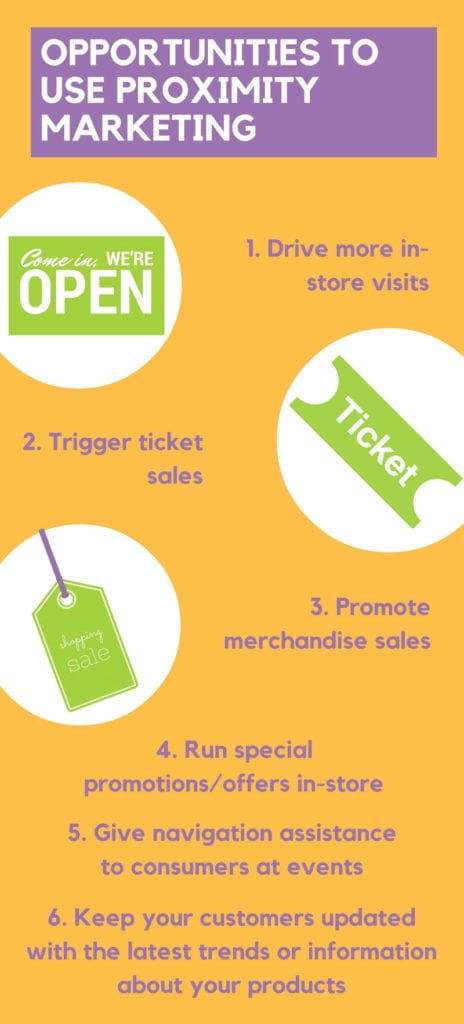The exponential growth of mobile device usage has made businesses look for new and attractive ways to engage with potential customers whilst keeping their existing clients happy. Proximity marketing helps small, medium and large size companies to do just that.
By using the full power of Bluetooth and Wi-Fi technologies, marketers can display a diverse range of content to mobile device users who are both nearby a location of your business and looking to make a purchase.
But what exactly is proximity marketing (also known as location based marketing)? It is a form of advertising which involves targeting mobile-device users with personalised content (e.g. an offer, coupon, news or extra information) based on how close these are to a specific location (your businesses shop location, a specific product you are selling, etc.). It then invites them to take an action. It's also a fantastic way to improve a customers buying experience! E.g. At Roland Garros, spectators can tap for up-to-date scores, statistics and background on tennis players, via NFC points dotted around the courts.
This marketing technique can be implemented utilising a number of different methods, such as Bluetooth beacons, NFC (Near Field Communication), QR codes, Geo-fencing and Wi-Fi. It can also be used for a variety of industries like retail, museums, sports facilities, airports, construction, and many more…
When talking about proximity marketing, there are many possible ways to use it; here are a few of them:
Last year Tesco successfully launched its trial of iBeacon technology, by deploying beacons in 270 stores across London and launched the ‘Mpulse app’ as a part of the Pink and Black marketing campaign. Once this app was downloaded, consumers received exclusive coupons for discounted Pink and Black Magnums directly to their phone when they passed by installed beacons in 270 Tesco Express stores.
Proximity marketing is an attractive tactic to marketers and businesses because more than 2 billion people own a smartphone and it can offer hyper-local and thus hype relevant communications. Setting up a proximity marketing campaign needs to be well thought through, if you would like some support, make sure you get in touch.

Email: sayhello@digitalwillow.biz
Phone: +44 (0) 207 183 6351
